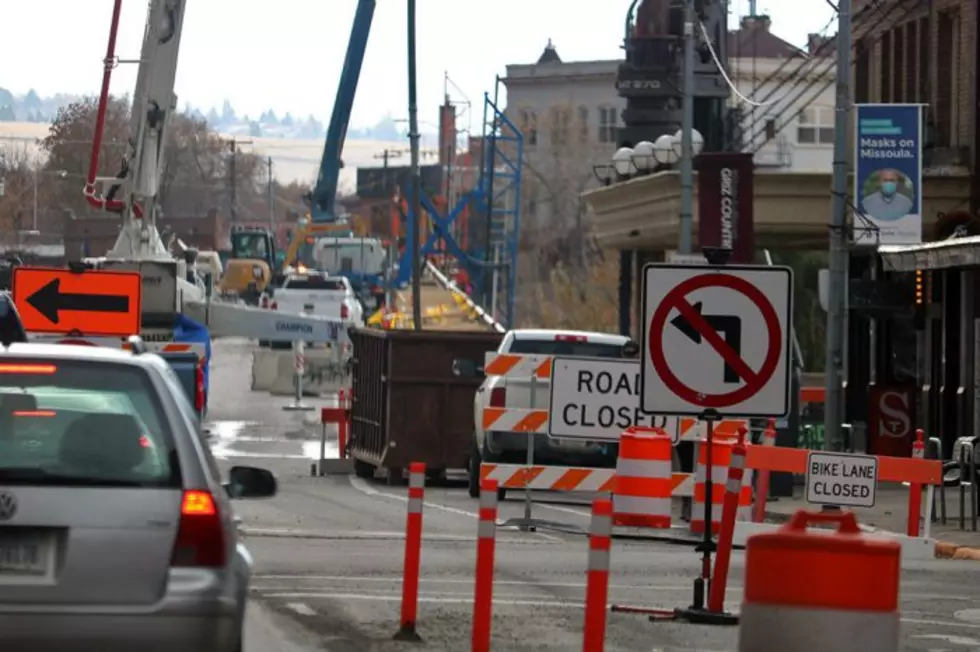
Design changes to Higgins leave MDT concerned as work on 4-lane bridge ends
While plans for Higgins Avenue remain in the works, state transportation officials on Tuesday expressed concern over proposals to reduce vehicle lanes to make room for other travel modes just as work on a four-lane bridge wraps up.
However, the challenges aren't insurmountable, they added, and changes to the corridor wouldn't likely come with any financial penalty to the city for the federal and state investment in the bridge.
“Let's not forget about the elephant in the room, to the tune of a $30 million elephant right in the middle of this project,” said Bob Vosen, the Missoula district administrator for the Montana Department of Transportation. “MDT went through a lot of time and effort to come up with a proper four-lane road with the proper shared-use paths on it – very expensive shared use paths on it.”
The city is midway through a process of designing plans to reshape Higgins Avenue from Broadway to Brooks Street. The stretch of road extends from downtown Missoula, across the Clark Fork River and into the Hip Strip area, and the bridge sits in the middle.
The road currently offers four vehicle lanes but has issues, transportation planners have said. Among them, left-hand turns are either difficult or restricted, parking is tight and other modes of travel, including bicycles, is dangerous.
City transportation planners want to improve the safety and consistency of the corridor just as the state finishes work on the four-lane bridge.
“One of the goals of this project is to figure out what is a consistent corridor and what does that look like so we can mitigate those issues,” said city transportation planner Aaron Wilson. “I think there's a lot of room for creative ideas and trying to get consistency across the corridor.”
Wilson said the three proposals for the project’s north end include maintaining the status quo or reducing four lanes to three with a dedicated center turn lane. That option would make room for raised bike lanes and have minimal impacts on parking.
Changes proposed south of the river to Brooks Street would also see a reduction in travel lanes with either raised or painted bike lanes. Another option would include a dedicated bus lane to match future plans for the Brooks Street corridor.
But the bridge was designed and engineered to carry four lanes of travel and bringing consistency to the corridor could mean changing traffic patterns on the bridge.
“It's not insurmountable, but we built the facility (bridge) that the community at that time was supportive of. Before we're done with that project, we're looking at reducing capacity. We just built a huge component of infrastructure to carry capacity and now we're talking about throttling back capacity. It's a struggle for us.”
Until a design is selected for the corridor, which is expected this summer or fall, Wilson said it’s difficult to determine how the new bridge will be utilized.
If a lane reduction on Higgins is selected north and south of the river, the bridge would have ample space for other possibilities, Wilson said.
“The development of the bridge project was done ahead of the decision of what the best design for Higgins was north and south of the bridge,” Wilson said. “We're at this point where we need to navigate that. While I think it's a challenge, the space on the bridge isn't going to go to waste. That added capacity will be used for something that benefits the corridor and the challenges of the corridor.”
Ryan Hammon with the Federal Highway Administration, which provided funding to MDT to complete the bridge project, said it's unlikely changing plans now would carry any financial penalty. He said the administration tries to make room for decisions at the local level.
Still, the cost of the bridge wasn't cheap and was provided to support four lanes.
“There are fewer hard and fast federal shall-nots here than a lot of people assume,” he said. “But we don't want to make huge financial investments in assets that aren't utilized as intended. We try really hard to allow local priorities in projects that we fund.”
